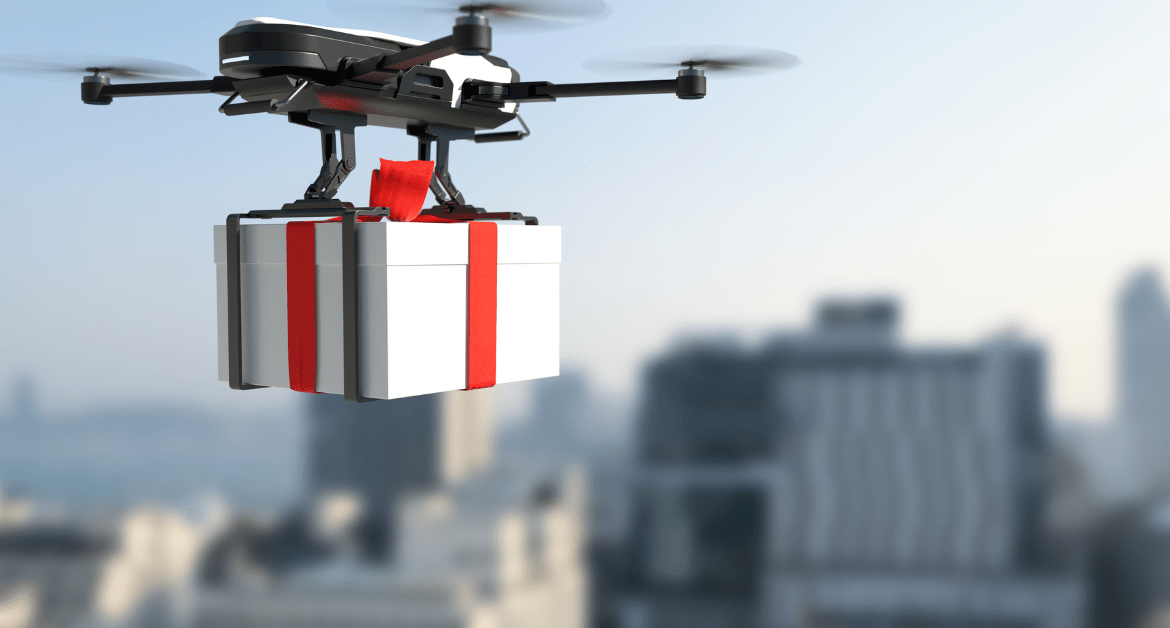
Future of Drone Delivery, The age of drones delivering packages to our doorsteps is approaching faster than you might think. Drones have advanced tremendously in recent years to become more versatile, safer, and capable of carrying heavier payloads. As regulators and companies continue to test and refine drone delivery systems, this emerging technology has the potential to radically transform product delivery in the coming decade.
Possibilities on the Horizon
We’ve all seen the viral videos of drones delivering medicine, food, and even coffee. The future of drone delivery promises to turn these publicity stunts into full-fledged delivery networks that provide convenient transport directly from a business to the customer.
Dozens of companies like Amazon, UPS, Uber Eats, and Walmart are investing heavily in developing safe, reliable, and efficient drone delivery operations. They aim to assemble vast armadas of unmanned aerial vehicles that can deliver small packages, prepared foods, and other products in minutes rather than hours or days.
Regulatory agencies are also working with corporations to establish drone highways and protocols that will integrate this new mode of transportation into urban and suburban areas. Drones could even facilitate shipping to the UAE and other countries by providing rapid transport across borders.
Read: Setting Up Utilities in Dubai when Relocated from the USA
Why Drones for Deliveries?
So why are companies betting big on drone deliveries? These pilotless machines offer some significant advantages over trucks and vans for making speedy deliveries, especially over short distances under 10 miles.
For starters, drones can take much more direct routes by air without having to deal with traffic, intersections, or road infrastructure. By beelining directly to the delivery location, drones can shave huge amounts of transit time. A driver has to navigate along streets and make multiple stops, while a straight-line drone flight cuts the distance and time significantly.
Drones also don’t get stuck in traffic jams that can severely delay ground transport and disrupt scheduled delivery arrival times. Their ability to fly over congested urban areas makes them far more reliable. Further optimization of drone network logistics and load balancing between aircraft could also boost efficiency.
Additionally, drones provide access to destinations that lack roads or have difficult terrain. By traveling as the crow flies, drone delivery could reach remote wilderness areas, islands, and ships offshore, and develop markets without transportation infrastructure.
What Will Be Delivered?
Don’t expect to get your new living room set or bulky big-screen TV dropped on your lawn anytime soon. The mainstream applications for drone delivery will likely focus on small, light packages in the 0-5 pound range.
Prime candidates for drone deliveries include:
- Prepared foods and groceries
- Medicines, medical supplies, and testing kits
- Smartphones, laptops, and electronic devices
- Printed documents and mail
- Retail products ordered online
Heavier packages can also work over very short distances under 2 miles where drone battery limits are less of a factor. As battery and lift capacity improves over time, drones may begin handling more varied items.
Challenges to Overcome
While drone technology is maturing quickly, some hurdles still stand in the way of seamless integration into delivery networks:
Battery Life
Most delivery drones today have a maximum flight time of 30 minutes when carrying a load. This restricts their practical range for long-distance transportation. Improving battery technology could expand that range, while automated battery swap stations might keep drones airborne longer.
Weather Conditions
Gusting winds, extreme cold or heat, dense fog, and precipitation can delay or ground many commercial drones. Engineers will need to enhance stability and enable all-weather operations to make them viable year-round.
Safety
A variety of sensors and autonomous decision-making helps drones avoid collisions, but ensuring their safe integration in low-altitude airspace remains a priority. Refined protocols, tracking systems, and aircraft-to-aircraft communication should mitigate risks.
Privacy and Noise
Residents may object to the perceived invasion of privacy and nuisance of low-flying drones making frequent deliveries in their neighborhoods. Updated laws, zoning, sound reduction, and community engagement might address some objections.
Learn: What are Freight Classes – Guide to NMFC Codes
Looking to the Skies
Within a decade, seeing delivery drones crisscrossing the skies could become commonplace. As the technology matures, receives regulatory approval, and becomes more economically viable, robotic aircraft should transform product distribution, expand customer access, offer businesses new capabilities, and generate novel job opportunities.
Rather than trucks clogging already crowded roads, silent drones may zip along predetermined aerial routes to drop off packages with speed, predictability, and precision. And customers could have goods that would take days to arrive land at their doorsteps within hours instead.
The influence of drone delivery promises to accelerate as increasing payloads, longer ranges, improved navigation, and full automation make it a versatile option. While still early days, this disruptive approach to transporting goods could soon take off on a broad scale.
So keep your eyes on the skies for the drones coming your way soon!

 800-13-7356
800-13-7356
